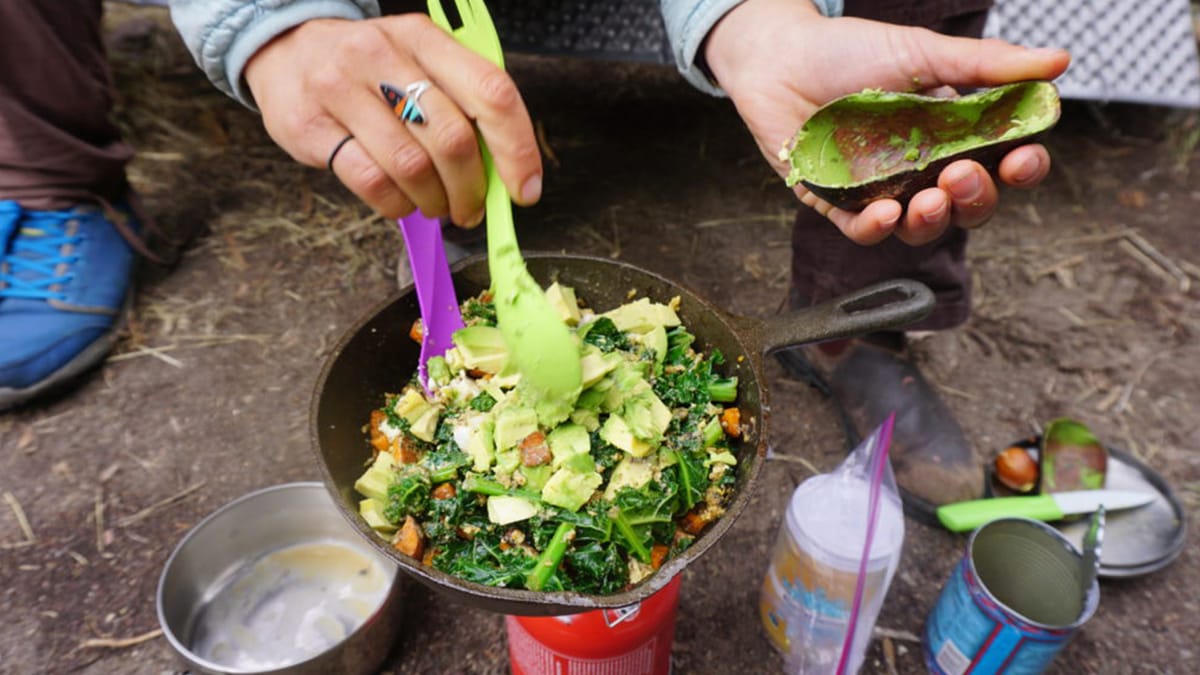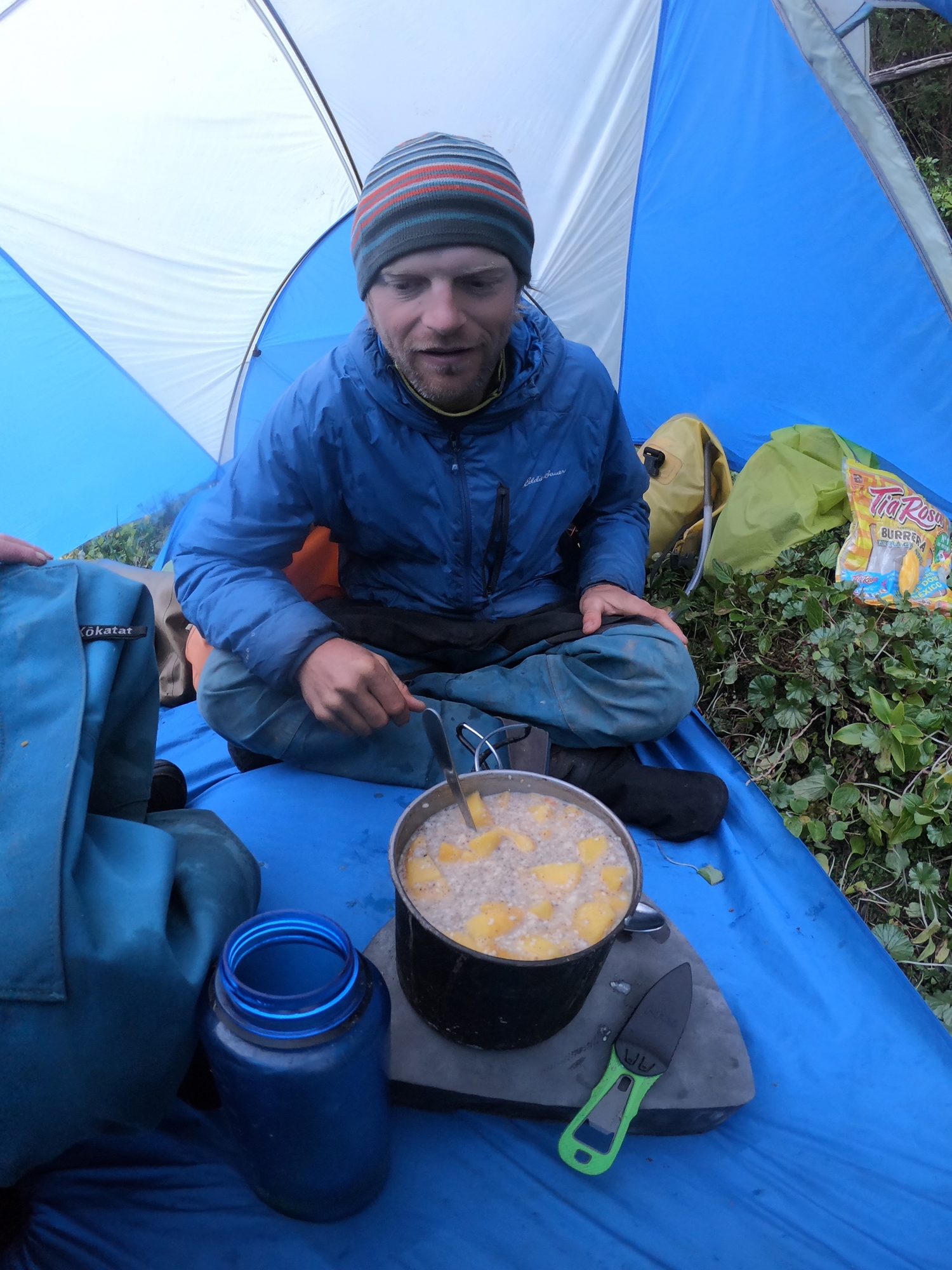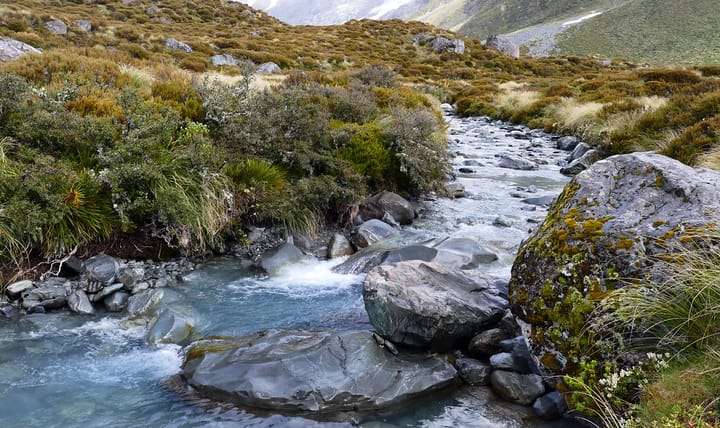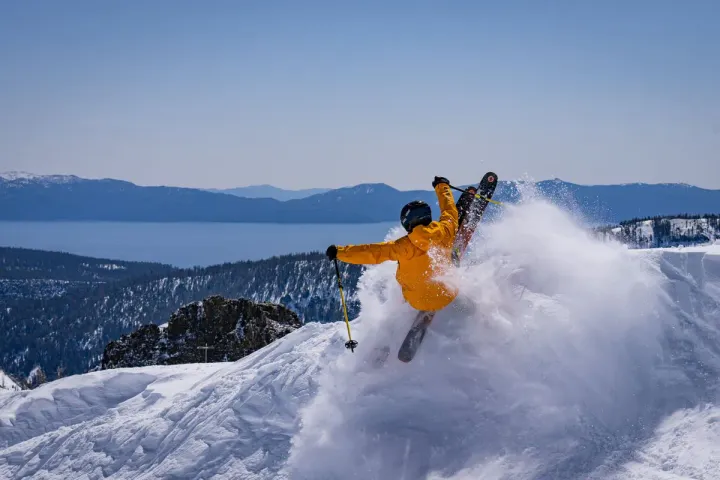Adventuring On A Plant-Based Diet With Ben Stookesberry
In the era of fad diets, we caught up with expedition whitewater kayaker, Ben Stookesberry, to hear his experience balancing diet and expeditions.

This is the era of fad diets. Paleo, Raw Foods, Alkaline, Macrobiotic, Ketogenic... they all come with the promise of being a faster, stronger, fitter, and all-around healthier athlete. Endurance athletes are using them to stay lean for long days of cardio. Crossfit athletes are using them to bulk up muscle mass before a big event. Mountain athletes are using them to maintain a perfect strength-to-weight ratio.
But do they work? Is it worth it? To give up sugar, carbs, fat, meat and alcohol in return for this unicorn-type promise of superhuman strength?
Expedition whitewater kayaker, Ben Stookesberry, recently adopted a vegan diet with the hope that it would allow him to keep pushing boundaries in the sport as his age pushes into his forties. We caught up with him to ask some questions about how his diet has affected his body, his athletic endeavors, and his expeditions.

TOJ: Can you give us a bit of a background on your athletic career?
"This pursuit has led to over 130 first descents in 36 countries, leading to 2 different nominations for National Geographic Adventurer of The Year and being named in 2016 as Men’s Journals Third Most Adventurous Man Alive"
Stookesberry: I have always been an athlete, but at first it was just traditional sports like football, baseball and basketball. I first really started to notice how my diet affected my athletic performance in high school, when I competed as a distance runner and was a part of a Colorado State championship 4 x 800 meter relay team. I took up kayaking when I was a Freshman in College as a part of training to be a raft guide for a summer job in Moab, Utah on the Colorado River. Pretty quickly exploratory kayaking became my life’s passion. Once I had worked through all of the most challenging runs in the guide books, I began going after rivers that had not yet been explored, and quickly realized the endurance component of carrying a heavy kayak - sometimes days into a wild river or around unrunnable stretches of river - was the key to the mission. Since then, I have trained not only my kayaking ability on the river but also my endurance hiking ability off the river. Over the years, this pursuit has led to over 130 first descents in 36 countries, leading to 2 different nominations for National Geographic Adventurer of The Year and being named in 2016 as Men’s Journals Third Most Adventurous Man Alive. Not sure I deserved all that, but it’s this exploratory/expedition kayaking that has kept me motivated and healthy all these years.
[embed]https://vimeo.com/279207415[/embed]
TOJ: What were your main reasons for adopting a vegan diet?
Stookesberry: I saw a film called “The Game Changers”, about a wide variety of vegan professional athletes - from a world record powerlifter to a world record long-distance runner, to MMA athletes, to the oldest Olympic gold medalist - all benefiting anecdotally and biologically from a vegan diet. I decided to give it a try to get in the best possible condition for the pursuit of expedition kayaking into my 40’s and beyond. I was sceptical that a purely vegan diet would satiate my appetite, and I initially fought off some serious cravings. I was amazed that within a few weeks I no longer craved meat, cheese, or eggs, and began enjoying a much more diverse diet that seemed to come with a lot less packaging. These days I hardly stray far from the produce section of the grocery store where fresh veggies are unpackaged and mostly ready to eat. That being said, my old favorites of hot-comfort food from burritos to pizza are still on the menu and seem to be so much tastier and healthier than the non-vegan versions I used to eat.

TOJ: How long have you been vegan?
Stookesberry: 13 months and counting. That being said, on a few occasions over that time I have eaten non-vegan meals with some amazing folks that have been kind enough to offer me their food. In that way, I feel like it is more important to graciously share their food than to refuse hospitality. And so my ethos is to choose vegan when I have the choice, which seems to be 99% of the time.
TOJ: How does your diet affect your body athletically? Do you think it has had a positive effect on your overall health?
Stookesberry: 6 months into my veganism, I ran the fastest 5k that I had run since the age of 18 at the age of 40. I am 10 pounds lighter, and endurance-wise, I feel like I am in the best shape of my life.
TOJ: Can you tell me a little about your process of packing food for a multi-day kayak trip? Any foods you always bring on expeditions?

Stookesberry: It really depends on the length of the trip. One constant is a breakfast featuring oats, chia, flax, dried fruit and nuts for its durability and weight-to-energy ratio. If it’s just a few nights on the river, I like to go all in on fresh produce. A root veggie base with broccoli, onion, garlic, and pine nuts is a personal favorite. Also preparing a few days in advance by soaking and cooking beans for hummus and bean dip is a wonderful lunch option. It amazes me that with just a good selection of veggies, all I need to bring is salt and oil and I am good to go and I don’t have to worry about animal protein going bad in summer conditions. For longer trips, I have gone for dehydrated meals, and these days there are plenty of vegan options. But I still bring the most durable fresh produce like garlic, onions, some roots, and greens like arugula to add more flavor and nutrients. Nuts, dried fruit, and vegan chocolate is my personal substitute for an energy bar, and I call it a homemade energy bag!

TOJ: Has it been difficult to maintain a vegan diet while you are on expeditions?
Stookesberry: It takes some focus and forethought, but I think that is mostly because I was in a completely different habit plan for my 39 years leading up to this one. It feels quite empowering to be so much more cognizant of what I am putting in my body, and obviously, there is simply no longer the need to eat much of anything that has all those nasty preservatives.
TOJ: Personally, I have always had a difficult time getting enough calories in my body to sustain energy on a long kayaking trip. Do you have any tricks you use for getting enough calories on expeditions?

Stookesberry: Keeping that “Power Bag” of nuts, dried fruit, and some quality chocolate is a good way to keep your energy up and make snacking easy. But really I like to make sure to plan the time to eat three tasty meals a day. Since the majority of the time I am kayaking with a group, it becomes important to coordinate with my teammates and plan meals so as to share as much food as possible. One thing that also works for me is keeping my caffeine and alcohol consumption low, as those both tend to inhibit my appetite.
TOJ: What does a typical day-long meal plan look like on a multi-day kayak trip?
Stookesberry:
Breakfast - 150g oats, chia, flax, pumpkin seeds, hemp hearts, raisins and walnuts (add a little salt).
Snack - Powerbag
Lunch - Hummus, veg (arugula, beet, carrot, avocado) sandwich
Dinner - 150g Rice, lentils, broccoli, onion, garlic, with or without nuts, salt, and olive oil.
TOJ: Anything else our readers might find interesting about nutrition on expeditions, or keeping up a good amount of calories as a vegan athlete while in the backcountry?
Stookesberry: Many times there is good foraging in the backcountry, like wild greens, berries, and mushrooms. It is a lovely way to spend time off the river and enrich the experience and the meals!
You can follow Ben on Instagram here.
Introducing The Outdoor Voyage
A booking platform and an online marketplace which only lists good operators, who care for sustainability, the environment and immersive, authentic experiences. All listed prices are agreed directly with the operator, and we promise that 86% of any money spent ends up supporting the local community that you’re visiting. Click the image below to find out more.






Comments ()